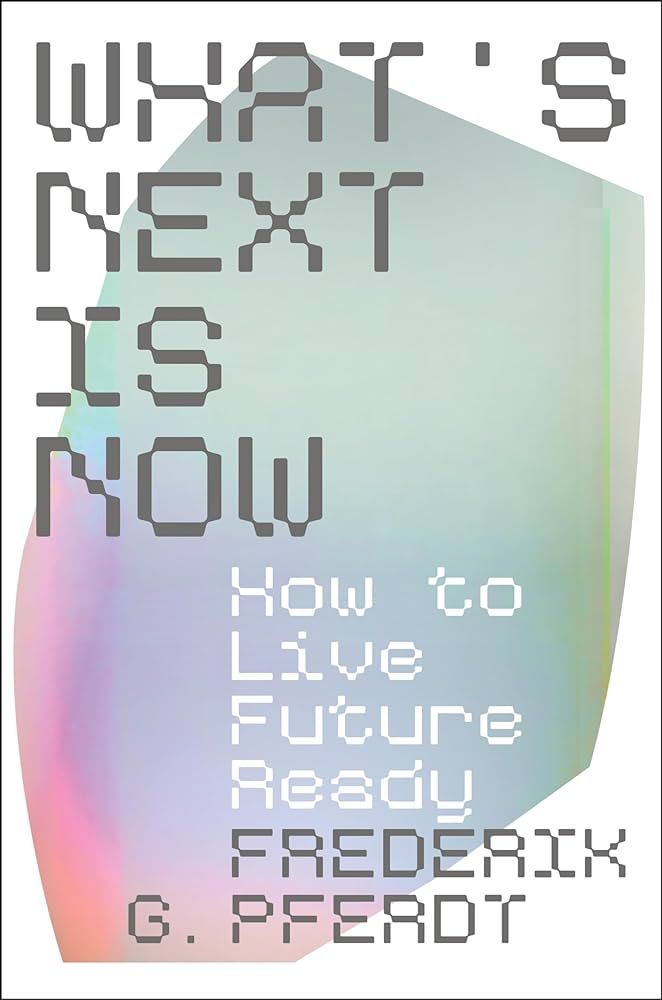He recently published “What’s next is now: How to live future-ready”, to share his experience and thinking about cultivating the mindstate to navigate and shape what lies ahead.
Here are a few interesting thoughts & insights I extracted, also based on a conversation he had with Dan Harris.
1. THE FUTURE SHOULDN’T HAPPEN TO US.
IT SHOULD BE SOMETHING WE MAKE HAPPEN.
BUT HOW TO DO THAT ON OUR OWN LITTLE SCALE?
It starts with perception and perspective: Dr Pferdt started his exploration by asking people 2 simple questions:
-> If you want to complete that sentence: “The future is…”, what is the first word that comes to mind?
-> And then, “The future I create is…”: what word comes to mind?
The answer to the second question is different from the first one: the first word that comes to mind is usually a different word, more positive and optimistic.
Why?
As soon as we put ourselves in the picture of the future, the future WE create, our perception of the future changes.
So the key, when thinking about the future, is:
– To move away from “What will the future bring?”: Passive question, where we’re passengers in the future.
– To “What is the future I want to create?: Future-ready mind state, where we’re the drivers of the/ OUR future
2. CONNECT THE OUTER WORLD WITH YOUR INNER WORLD
– The outer world is constantly changing: We can’t control it, but we can influence it through our choices and behaviours.
– We don’t necessarily have more control over our inner world, but we can train ourselves to respond better to our thoughts, emotions & beliefs.
– The magic happens when we connect both worlds.
-> The key question is: How do I want TO BE in the future?
If you think in those terms about your future, you can make this future happen.
3. 6 QUALITIES CAN HELP US DEVELOP A FUTURE-READY MINDSTATE, THAT ALLOWS TO SEE MORE POSSIBILITIES IN THE FUTURE
RADICAL OPTIMISM:
– Not about the glass being half full or half empty, but about believing in the potential of “BETTER”.
– Better is the result of constant and persistent iterations, to improve what’s in front of you. The pursuit of better is about progress, not perfection: it allows to see what better can come from previous or bad experiences.
UNRESERVED OPENNESS:
– We constantly say “No” to many questions we are asked (and it saves us energy). But a “No” doesn’t get you anywhere. It stops you from exploring something new.
– Instead, try saying “Yes, AND…?”
– By saying Yes, we’re opening to possibilities. “Yes, and…”: we’re building on it, adding something to it. Not saying yes to everything, but at least allowing for possibilities. Wait before deciding, give space and time to explore the idea, at least for a short time ; focusing on the hardest things in it, not on the easiest ones, and explore it quickly to decide if it’s worth pursuing or not.
PERPETUAL EXPERIMENTATION:
– People often assume, erroneously, that the purpose of experimentation is success, so they don’t experiment for fear of failure.
– The objective of experimentation should be just learning. Shifting your expectations on experimentation should allow you to experiment more.
COMPULSIVE CURIOSITY:
– Every choice you make today reflects how you want to be in the future. Curiosity is something we’re born with, and it goes dormant overtime, in human beings but also in organisations.
– Powerful questions that can unlock your curiosity again:
> What if?
> Why not?
> Asking 5 Whys in a row: New solutions emerge when taking this approach
OPENNESS TO CHANGE:
– Expansive empathy, for example, can be applied to yourself, not only others; esp. how you relate to your future self.
– When people empathize with their future self (How do I want to be in the future? + understanding what their future needs might be), they can better change their behaviour in the moment.
DIMENSION X:
– Your unique super power, how you managed to move forward through your life’s highs and lows.
Book’s page: https://lnkd.in/egEpfYrK

